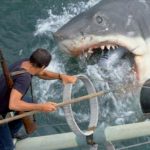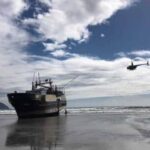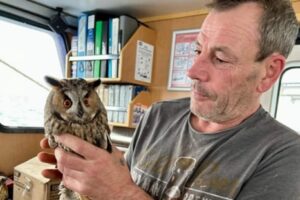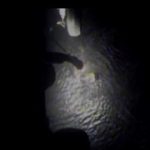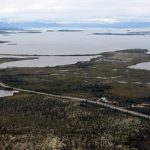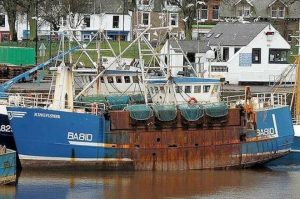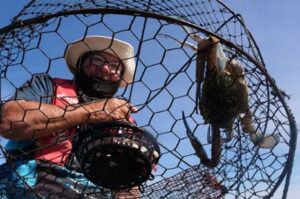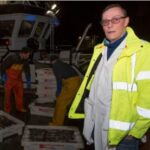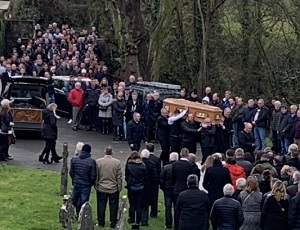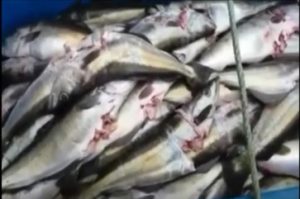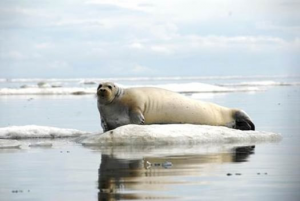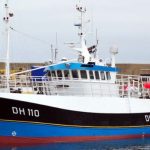Monthly Archives: January 2013
Gulf Seafood Marketing Coalition aims to increase Gulf seafood market
 The Gulf Seafood Marketing Coalition, which brings fishing industry and marketing officials from the five Gulf states together to promote the Gulf fishery, is working with retailers and restaurants nationwide to reclaim the market. The Gulf produces 70 percent of the nation’s oysters and 69 percent of its domestic shrimp, according to the Louisiana Seafood Promotion and Marketing Board. Until recently, however, the states along the Gulf Coast did not work together to market seafood under one, unified brand. Read more
The Gulf Seafood Marketing Coalition, which brings fishing industry and marketing officials from the five Gulf states together to promote the Gulf fishery, is working with retailers and restaurants nationwide to reclaim the market. The Gulf produces 70 percent of the nation’s oysters and 69 percent of its domestic shrimp, according to the Louisiana Seafood Promotion and Marketing Board. Until recently, however, the states along the Gulf Coast did not work together to market seafood under one, unified brand. Read more
California pearls.Turns out the Golden State accounts for the vast majority of the U.S. sturgeon and caviar production.
ELVERTA, Calif. – With your flute of French Champagne this weekend, how about a little caviar on toast from California?,,,To the surprise of many would-be gourmands, the halcyon days of caviar are over. Most of the world’s produc tion no longer comes from such exotic spots as Russia’s Volga River and western Asia’s Caspian Sea. Those supplies are almost completely depleted from pollution, poaching and overfishing of the caviar-egg-bearing sturgeon.,,,Instead, it turns out that Sacramento County, Calif., now is the epicenter of U.S. sturgeon and caviar production,,,Read more
tion no longer comes from such exotic spots as Russia’s Volga River and western Asia’s Caspian Sea. Those supplies are almost completely depleted from pollution, poaching and overfishing of the caviar-egg-bearing sturgeon.,,,Instead, it turns out that Sacramento County, Calif., now is the epicenter of U.S. sturgeon and caviar production,,,Read more
The Waning of Political Power for Fishermen? by Ben Martens
There is a long and storied history of great supporters of fisheries and the fishing industry in Congress. The late Senator Warren Magnuson of Washington was a lover of the marine environment and helped pen the Marine Mammal Protection Act in order to protect the Orca whales of Puget Sound. Additionally,,,,,,,,Read more
I missed this one. AJOC EDITORIAL: State should foot the bill for salmon disaster
 The first fishery management plan approved after the passage of the original Magnuson Act in 1976 was the Alaska salmon FMP delegating that responsibility to the Department of Fish & Game. After revisions to what later became the Magnuson-Stevens Act were passed in 2006, all FMPs were required to be updated within five years to meet new requirements for setting annual catch limits and accountability measures….The result was the North Pacific Fishery Management Council amending the salmon FMP in 2011 to officially remove waters near Cook Inlet, Prince William Sound and the Alaska Peninsula from federal control. The only state-managed salmon fishery that officially remains within the federal FMP is the Southeast salmon troll fishery that must be managed in accord with the Pacific Salmon Treaty between the U.S. and Canada. Read more
The first fishery management plan approved after the passage of the original Magnuson Act in 1976 was the Alaska salmon FMP delegating that responsibility to the Department of Fish & Game. After revisions to what later became the Magnuson-Stevens Act were passed in 2006, all FMPs were required to be updated within five years to meet new requirements for setting annual catch limits and accountability measures….The result was the North Pacific Fishery Management Council amending the salmon FMP in 2011 to officially remove waters near Cook Inlet, Prince William Sound and the Alaska Peninsula from federal control. The only state-managed salmon fishery that officially remains within the federal FMP is the Southeast salmon troll fishery that must be managed in accord with the Pacific Salmon Treaty between the U.S. and Canada. Read more
Coast Guard searching for 2 overdue fishermen near Lonesome Bayou
 NEW ORLEANS — The Coast Guard is searching for two overdue fishermen in the vicinity of Lonesome Bayou east of Pilot town, Sunday. Missing are Thanh Ha, owner of the boat, and Anthony Nguyen, crewmember. Read more
NEW ORLEANS — The Coast Guard is searching for two overdue fishermen in the vicinity of Lonesome Bayou east of Pilot town, Sunday. Missing are Thanh Ha, owner of the boat, and Anthony Nguyen, crewmember. Read more
The US Coal Industry Wants to Boost Exports to Asia – Native American Tribes Stand in the Way – Lhaq’temish – People of the Sea
The gray waters of the Puget Sound are rough and scattered with white caps on this cold and wet October morning. The air is pungent with the low-tide smells of seaweed and salt. Schools of chum salmon are migrating from the Pacific into the Nooksack River to spawn. A handful of Lummi fishermen in small weather-beaten boats brave the driving rain and frigid gusts to reel in their nets, harvesting the fish as their ancestors have done for 175 generations… The Lummi have traditionally kept a low profile and declined to get openly involved in the political controversies of their white neighbors. But now tribe members are taking center stage in a fight that they believe is about the very existence of the fish that is so central to their traditional way of life. Coal, LNG, Energy exports. Read more
On a roll! Coast Guard terminates F/V Snark voyage near Sitka, Alaska
 ANCHORAGE, Alaska — The crew of the Coast Guard Cutter Naushon terminated the voyage of the fishing vessel Snark near Sitka after discovering several safety issues aboard the vessel Friday. The crew of the Naushon escorted the 42-foot, wood hull fishing vessel Snark, with three people aboard, to Sitka Harbor. Read more
ANCHORAGE, Alaska — The crew of the Coast Guard Cutter Naushon terminated the voyage of the fishing vessel Snark near Sitka after discovering several safety issues aboard the vessel Friday. The crew of the Naushon escorted the 42-foot, wood hull fishing vessel Snark, with three people aboard, to Sitka Harbor. Read more
Tacoma Shipyard J. M. Martinac Shipbuilding Corp. launches a 184-foot F/V Northern Leader
 Published on Jan 26, 2013 At 05:30 just around high tide, J. M. Martinac Shipbuilding Corp. Launched the F/V Northern Leader. The 184-foot high tech fishing vessel is capable of holding over 1000 tons of Cod. Deployed in the Bearing Sea, the Northern Leader is operated by 31 persons and can deploy a long line over 45 miles. With hooks every 4 feet, the total number the line can hold is around 76,000 individual hooks. It is powered with five Caterpillar generators supplying two 1000 Kilo Watt Schottle Z drive electric motors. The hold is refrigerated with 3, 150 hp compressors reducing the temperature down as low as -25 degrees F. As one of the most environmentally friendly fishing boats, it will take about 30 days to complete a catch. This boat will set a new trend in fishing. Watch video fore, Watch video aft.
Published on Jan 26, 2013 At 05:30 just around high tide, J. M. Martinac Shipbuilding Corp. Launched the F/V Northern Leader. The 184-foot high tech fishing vessel is capable of holding over 1000 tons of Cod. Deployed in the Bearing Sea, the Northern Leader is operated by 31 persons and can deploy a long line over 45 miles. With hooks every 4 feet, the total number the line can hold is around 76,000 individual hooks. It is powered with five Caterpillar generators supplying two 1000 Kilo Watt Schottle Z drive electric motors. The hold is refrigerated with 3, 150 hp compressors reducing the temperature down as low as -25 degrees F. As one of the most environmentally friendly fishing boats, it will take about 30 days to complete a catch. This boat will set a new trend in fishing. Watch video fore, Watch video aft.
ALASKA DEPARTMENT OF FISH AND GAME DIVISION OF COMMERCIAL FISHERIES NEWS RELEASE
 2013 Yukon River Summer Salmon Fishery News Release # 1 Yukon Area Regulatory Changes Districts Affected: Yukon River Area. The Alaska Board of Fisheries (board) met in Anchorage from January 15 to January 20 to review regulatory fisheries proposals concerning the Arctic-Yukon-Kuskokwim areas. Read the news release
2013 Yukon River Summer Salmon Fishery News Release # 1 Yukon Area Regulatory Changes Districts Affected: Yukon River Area. The Alaska Board of Fisheries (board) met in Anchorage from January 15 to January 20 to review regulatory fisheries proposals concerning the Arctic-Yukon-Kuskokwim areas. Read the news release
IRS Provides Penalty Relief to Farmers and Fishermen
The Internal Revenue Service announced today (Jan. 18, 2013) that it will issue guidance in the near future to provide relief from the estimated tax penalty for farmers and fishermen unable to file and pay their 2012 taxes by the March 1 deadline due to the delayed start for filing tax returns. Read more
Rhode Island Fishermen’s Alliance Weekly Update JANUARY 27, 2013
“The Rhode Island Fishermen’s Alliance is dedicated to its mission of continuing to help create sustainable fisheries without putting licensed fishermen out of business.” Read the update
Continental divide? Building the Fishery Bridge from New England to Alaska – Sharing concerns for fisheries
Fishermen from Gloucester and Alaska fish drastically different areas during different times of the year, but one thing is for certain: They’re all in the same boat when it comes to defending and protecting an industry under siege from many sides. That was one of the messages echoed Friday when Katherine Carscallen, captain of the fishing vessel Sea Hawk based out of Dillingham, Alaska, met with Gloucester fishermen and supporters of the commercial fishermen at a get-together organized by Gloucester Fishermen’s Wives Association President Angela Sanfilippo. Read more here
Study: Alaska salmon stocks spiked and crashed long before commercial fishing
ANCHORAGE — A new study presents evidence that salmon populations in Bristol Bay have surged and sagged wildly — for hundreds of years at a time — well before the first commercial fishing in Alaska. The research, published this month in the online edition of the Proceedings of the National Academy of Sciences, summarized data collected and analyzed over the past 15 years by scientists in the U.S., Canada, Norway and China. Read more here
Gulf of Alaska Groundfish Ratz: Kodiak assemblies’ letter misses the protective mark by Stephen Taufen
January 26, 2013
In December, the Federal Register declared that the North Pacific Fisheries Management Council is proceeding on giving away federal fish resources to selected trawl recipients in the Gulf of Alaska. Homer, Kodiak, King Cove and Sand Point are among the most affected — all challenged to economically protect their fishery dependent coastal municipalities and boroughs.
The local city of Kodiak and the Kodiak Island Borough’s joint fishery work group has shown concern and help many meetings over the past seven months, listening to input from all sides. One must applaud when elected officials get highly involved; but that is only if they truly keep the public’s interests foremost. They could take a lesson from New Bedford’s former Mayor Lang’s firm stance about preserving fishing jobs and protecting the local economy against privatization forces. Read more
Western Gulf fishermen join discussion on catch sharing
Come February, a federal fisheries council will continue to discuss catch-sharing programs in Alaska trawl fisheries – this time with a bigger voice from southwest fishermen. This winter the North Pacific Fisheries Management Council (NPFMC) has heard from concerned parties in the state’s south central ground fisheries, regarding a change over to catch sharing. Read more
Search on for overboard fisherman 400 miles offshore from St. Augustine
Peter Steewell has been missing since about 5 p.m. Thursday when he fell from the 57-foot longliner Fine Tuna into seas of eight to nine feet and water that was about 73-degrees Fahrenheit. Winds were blowing at 35 mph, according to the Coast Guard. Read more
North Coast Gulf of the Farallones marine sanctuary expansion praised at hearing
Sanctuaries do not regulate fishing, said Maria Brown, superintendent of the Cordell Bank sanctuary, noting that trawling would be allowed. Zeke Grader, executive director of the Pacific Coast Federation of Fishermen’s Associations, said in an interview that his industry already has “a good set of regulations” promulgated by the National Marine Fisheries agency. The proposed expansion covers an important commercial fishing area for salmon, crab and rockfish, he said. Grader said he wants to know if sustainable energy development, such as wind and wave energy generators, would be allowed in the expansion area. “We fully support renewable energy, we just don’t think it belongs in these waters,” Grader said. Onshore development would be needed to support such a system, he said. Read more
Request to amend American Samoa National Marine Sanctuary rule
The US Secretary of Commerce has been requested to make changes to the federal rule which established the American Samoa National Marine Sanctuary. The Governor’s Office said local fishermen raised their concerns regarding the sanctuary rules because they say it limits their ability to earn a living. Read more Fagatele Bay National Marine Sanctuary
Maine shrimp season won’t change yet
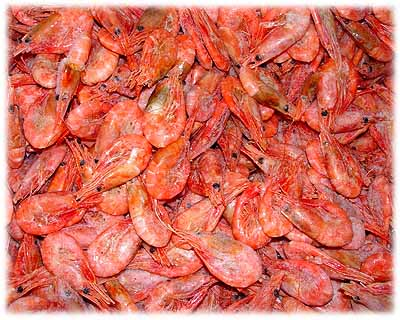 The Maine Department of Marine Resources released a statement Friday indicating that the DMR commissioner will allow shrimp fishing from sunrise to 3 p.m. Monday, Jan. 28, and Wednesday, Jan. 30. Shrimp trawlers in the Gulf of Maine are allowed to fish only two days a week, on Mondays and Wednesdays, during the 2013 season, which began Jan. 23. Read more
The Maine Department of Marine Resources released a statement Friday indicating that the DMR commissioner will allow shrimp fishing from sunrise to 3 p.m. Monday, Jan. 28, and Wednesday, Jan. 30. Shrimp trawlers in the Gulf of Maine are allowed to fish only two days a week, on Mondays and Wednesdays, during the 2013 season, which began Jan. 23. Read more
Fish fight: Western Alaska group objects to McDonald’s marketing
 McDonald’s announced this week that packaging on its Filet-O-Fish sandwiches and new fish nuggets, both made from pollock caught in the Bering Sea, will be stamped with a label that reads “Certified Sustainable Seafood.” What most customers won’t know is that Alaska pollock is a controversial fish among some village fishermen who blame the trawler fleet for wasting thousands of king salmon each year. Read more
McDonald’s announced this week that packaging on its Filet-O-Fish sandwiches and new fish nuggets, both made from pollock caught in the Bering Sea, will be stamped with a label that reads “Certified Sustainable Seafood.” What most customers won’t know is that Alaska pollock is a controversial fish among some village fishermen who blame the trawler fleet for wasting thousands of king salmon each year. Read more
Regional NOAA head won’t ease limits: Richard Gaines
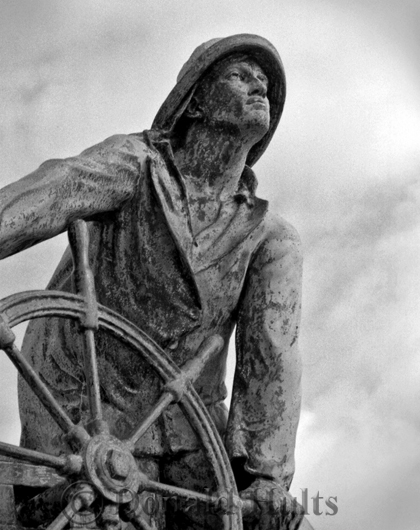 Claiming his hands are tied legally, NOAA regional administrator John Bullard has rejected a nearly unanimous request by the New England Regional Fishery Management Council to give the inshore cod fishery centered on Gloucester a second year of interim relief from extreme cuts in landings. The interim action on Gulf of Maine cod for the 2012 fishing cycle, which ends April 30, reduced landing limits by 22 percent compared to the prior year, and the seafood coalition — later backed by the regional council — had hoped to extend that limit rate for another year, in part while questions are answered regarding the assessments. Read more
Claiming his hands are tied legally, NOAA regional administrator John Bullard has rejected a nearly unanimous request by the New England Regional Fishery Management Council to give the inshore cod fishery centered on Gloucester a second year of interim relief from extreme cuts in landings. The interim action on Gulf of Maine cod for the 2012 fishing cycle, which ends April 30, reduced landing limits by 22 percent compared to the prior year, and the seafood coalition — later backed by the regional council — had hoped to extend that limit rate for another year, in part while questions are answered regarding the assessments. Read more
Coast Guard stresses the importance of life jackets, proper sleep while crabbing
 The crabbing vessel Senja departed the Westport, Wash., marina at approximately 6 a.m. on Jan. 14, 2013, with four people aboard, for a week-long crabbing excursion. On Jan. 15, at approximately 6 p.m., the crew began hauling and resetting crab pots, working for several hours. The captain of the vessel commented that the weather was very mild. Though it was dark, there were 2-3 foot swells, no wind, and excellent visibility. A crewmember fell overboard, suddenly and unexpectedly, entering the water headfirst,,,,,Read more
The crabbing vessel Senja departed the Westport, Wash., marina at approximately 6 a.m. on Jan. 14, 2013, with four people aboard, for a week-long crabbing excursion. On Jan. 15, at approximately 6 p.m., the crew began hauling and resetting crab pots, working for several hours. The captain of the vessel commented that the weather was very mild. Though it was dark, there were 2-3 foot swells, no wind, and excellent visibility. A crewmember fell overboard, suddenly and unexpectedly, entering the water headfirst,,,,,Read more
Alaska Lt. Governor Pushes for Safety in the World’s “New Ocean”
Tromsø, Norway – The world is responding to the opportunities of a “new ocean” as Arctic sea ice changes and global shipping increases the value of Arctic resources. “This is the age of Arctic shipping the great explorers dreamed of. We’ve been given a new ocean of possibilities – and dangers – and we need to do everything we can to prepare for both,” Lt. Gov. Treadwell said. Read more
Alaska: Halibut catch limit cut, again – Molly Dischner
Westcoast Halibut fishermen in the Pacific will see about a seven percent reduction in catch this year, less than many were expecting. The International Pacific Halibut Commission today set the coastwide catch from Northern California to the Bering Sea at 31.02 million pounds. Alaska’s portion of the catch is about 23 million pounds. Read more Documents and recordings of the meeting are available online.
From the Deckboss
McPollock, Yes, you’re all doing great!, Halibut harvesters catch a break. Read more, and read the comments.
Tune In to freefish7 radio with your host, North Carolina commercial fisherman Chris McCaffity
This show is designed for you to be a part of and for your convenience. You can listen whenever you want and each episode is only 30 minutes long. You can call in to live shows or ask questions in the comment section. You can even be a guest if there is an issue related to harvesting natural resources you would like to discuss. Thank you for participating and I hope you enjoy the show! Click the links below to listen to archives and see scheduled episodes.
First episode. 1/22/2013
http://www.blogtalkradio.com/freefish7/2013/01/22/first-episode-12213 (archived)
Upcoming Q&A episode. 1/26/2013
http://www.blogtalkradio.com/freefish7/2013/01/26/qa-episode-12613
Northeast fishing chief: Devastating cuts coming – said blame for the situation goes to managers, because “we set the rules and clearly the rules have failed.”
Regional regulators will meet Wednesday to decide catch limits for fishermen who chase bottom-dwelling groundfish, such as cod and haddock.
But committees of the New England Fishery Management Council have already recommended massive cuts fishermen say will cause industry collapse. Read more
The undeniable truth of pollution on offshore oil and gas facilities
 The offshore waters of the Gulf of Mexico belong to the soverin nation of the United States of America. This government protects this property for the citizens of the United States. Here along the gulf coast we depend highly upon the gulf environment to provide millions of people with jobs surrounding the seafood and recreational fishing industry as well as the travel and vacation industries…..Crude oil produced from offshore oil & gas facilities contain a huge amount of harmful and toxic chemicals which can destroy ocean food chains as well as human life. Crude oil contains such harmful and deadly toxins such as N.O.R.M = naturally occuring radioactive = gama radiation material , Benzyne , Tolulene both of which are cancer causing agents as well as a vast number of other harmful and toxic chemicals, that are absorbed by the sea life and in turn consumed by us . Read more
The offshore waters of the Gulf of Mexico belong to the soverin nation of the United States of America. This government protects this property for the citizens of the United States. Here along the gulf coast we depend highly upon the gulf environment to provide millions of people with jobs surrounding the seafood and recreational fishing industry as well as the travel and vacation industries…..Crude oil produced from offshore oil & gas facilities contain a huge amount of harmful and toxic chemicals which can destroy ocean food chains as well as human life. Crude oil contains such harmful and deadly toxins such as N.O.R.M = naturally occuring radioactive = gama radiation material , Benzyne , Tolulene both of which are cancer causing agents as well as a vast number of other harmful and toxic chemicals, that are absorbed by the sea life and in turn consumed by us . Read more
Saving Seafood investigates: Why aren’t fishermen catching their quotas? by John Cooke and Sarah Hanselman
Some observers have expressed the view that current quotas are not being met as the result of a lack of fish. For example, Tom Dempsey, of the Cape Cod Commercial Hook Fishermen’s Association and a NEFMC member, is quoted by the Associated Press: “There’s a disaster in New England groundfish, but it’s because we can’t catch the quotas we have. And in most cases, that’s because those fish just aren’t there.” However, fisheries experts, industry members, and a number of scientists contend that the problem is not that there aren’t enough fish to be caught, but that current regulations and related factors prevent fishermen from catching them. Read more
by the Associated Press: “There’s a disaster in New England groundfish, but it’s because we can’t catch the quotas we have. And in most cases, that’s because those fish just aren’t there.” However, fisheries experts, industry members, and a number of scientists contend that the problem is not that there aren’t enough fish to be caught, but that current regulations and related factors prevent fishermen from catching them. Read more

































